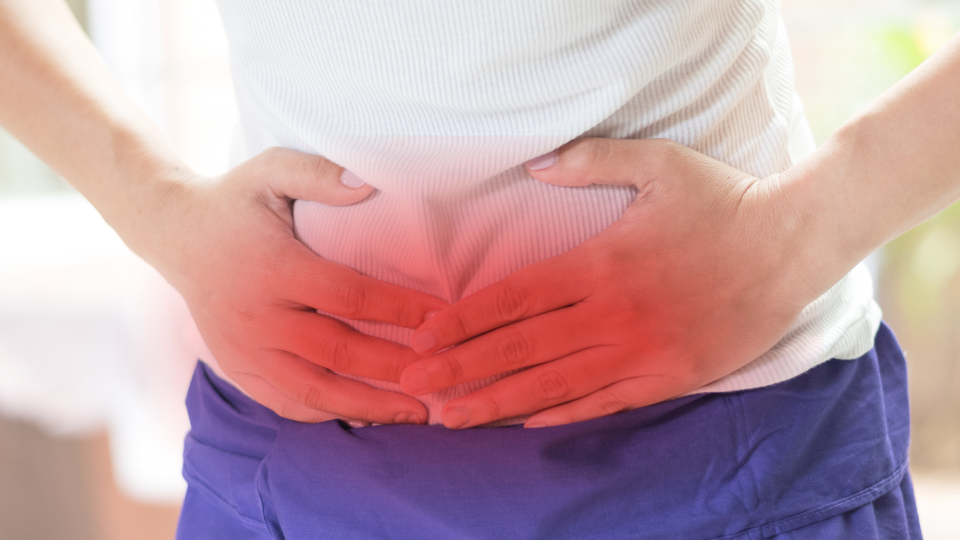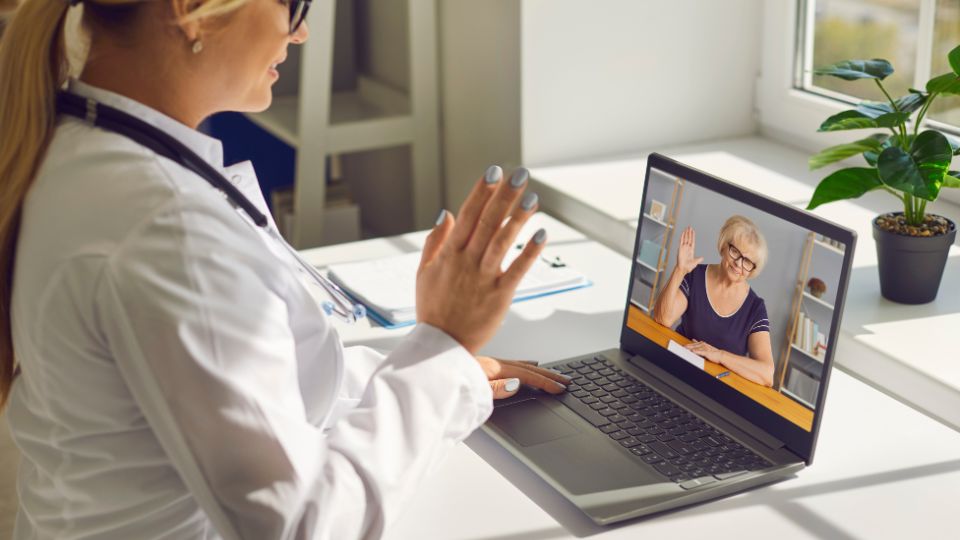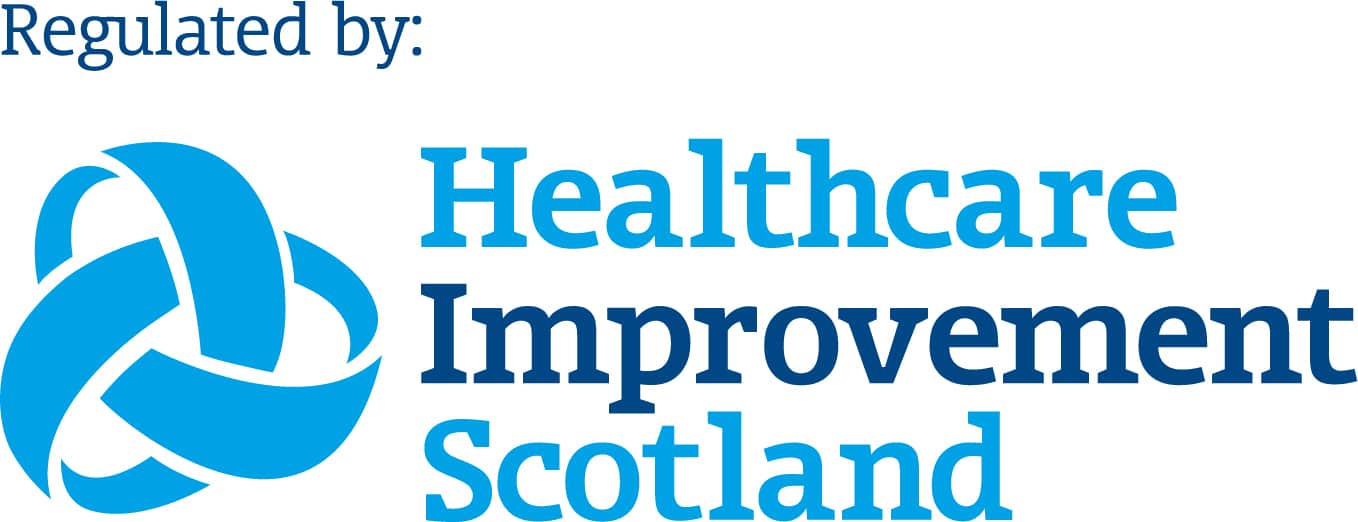Chronic pelvic pain in women is often a debilitating condition resulting in a significant reduction in quality of life in the affected individuals. It is a common presentation in UK primary care, with 38 per 1000 women affected annually—a rate comparable to those of asthma (37 per 1000) and back pain (41 per 1000) (1). There is often a delay in treatment due to the difficulties in diagnosing the condition and its underlying cause.

What exactly is Chronic pelvic pain (CPP)?
CPP can be both a symptom or a syndrome. The former is defined as a persistent or chronic pain perceived in structures related to the pelvis. It is often associated with negative cognitive, behavioural, sexual and emotional consequences as well as with symptoms suggestive of lower urinary tract, sexual, bowel, pelvic floor or gynaecological dysfunction (2)
Chronic pelvic pain syndrome (CPPS) is the occurrence of CPP when there is no obvious local pathology that may account for the pain. The diagnosis is attributed when symptoms are continuous or recurrent and have been present for at least 6 months (2). The difficulty in diagnosis lies in the fact that there may be a mix of physical, psychological and social causative factors.
What are the possible gynaecological causes of chronic pelvic pain?
Endometriosis
This is a condition in which tissue from the lining of the womb (uterus) grows outside the uterus. These deposits of tissue respond to your menstrual cycle. Just as your uterine lining responds to your menstrual cycle, so do these deposits of tissue in that they thicken, break down and bleed each month as your hormone levels rise and fall. As this happens outside the uterus, the blood and tissue can’t exit through the way the uterine lining normally does – through the vagina. Instead, they remain in the abdomen, where they can lead to painful cysts and fibrous bands of scar tissue (adhesions) (3).
Fibroids
These are uterine growths may cause pressure or a feeling of heaviness in the lower abdomen. They rarely cause sharp pain unless they become deprived of a blood supply and begin to die (degenerate). They do not develop into cancerous growths, however, depending upon their position in the womb, they can cause significant problems in addition to pelvic pain such as heavy periods and subfertility (4).
Chronic pelvic inflammatory disease
This can occur if a long-term infection, often sexually transmitted, causes scarring that involves the pelvic organs such as the uterus, ovaries and fallopian tubes (5).
What are the possible bowel disorders involved in CPP?
Irritable bowel syndrome (IBS)
Symptoms associated with IBS — bloating, constipation or diarrhoea — can be a source of pelvic pain and pressure. It is often extremely difficult to determine that IBS is the cause in some women. A study in North Carolina looking at pelvic pain in women over an eight year period showed that almost half of the participants met the diagnostic criteria for IBS – however less than half of these patients had any diagnosis of IBS (6).
Inflammatory Bowel Disease
This condition is associated with inflammation in the small or large intestine, such as ulcerative Colitis or Crohn’s disease. Sometimes adhesions form in the abdomen or pelvis causing pain (7).
Musculoskeletal problems
Conditions affecting the bones, joints and connective tissues (musculoskeletal system) — such as fibromyalgia, pelvic floor muscle tension (pelvic floor dysfunction), inflammation of the pubic joint (pubic symphysis) or hernia — can lead to recurring pelvic pain (8). In one study, pelvic floor dysfunction was thought to be the cause of CPP in over half the participants (8).
Urological Causes of CPP
Painful bladder syndrome (interstitial cystitis)
This condition is associated with recurring pain in the bladder and a frequent need to urinate. Pelvic pain may be experienced as your bladder fills, which may improve temporarily after emptying the bladder (8).
Psychological factors
Depression, chronic stress or a history of sexual or physical abuse may increase the risk of CPP. Emotional distress can intensify pain, whilst living with chronic pain contributes to emotional distress. These two factors often become interlinked (3).
Diagnosis
Due to the conditions mentioned above, determining the cause of CPP often involves a process of elimination. In addition to a detailed personal and family medical history, health professionals may ask patients to keep a diary of pain and other associated symptoms. A full examination including a pelvic examination is essential as this can give important information on signs of infection, any tenderness, abnormal growths or lumps.
Tests may include routine blood tests to check for infection, liver and kidney dysfunction, whilst urinalysis and urine culture may also be performed to rule out a urinary tract infection. Sometimes a vaginal or cervical swab may also be required to rule out infections.
Imaging investigations such as ultrasound, X-rays, CT or MRI scanning may be performed depending on the history the patient has given. Similarly other investigations such as laparoscopy may be required (for example if endometriosis is suspected). This is where a small incision is made into the abdomen and a small camera is inserted so that the pelvic organs can be visualised. Where bowel causes are suspected, a colonoscopy (camera test into the large intestine) may be performed to visualise the inside of the large bowel – looking for inflammation or narrowing.
Finding the underlying cause of chronic pelvic pain can be a long process, and in some cases, a clear explanation may never be found. One reason for this is that many of the diagnostic investigations examine the structure of the pelvic organs to check for abnormalities, whereas there may be a problem in the functioning of an organ – this is often not picked up on traditional investigations.
Treatment
If a specific cause is found, treatment will focus on that cause. However, if a cause can’t be identified, treatment will focus on managing pain and other symptoms. For many women, the best approach involves a combination of treatments. The goal of treatment is to reduce symptoms and improve quality of life.
Medications
Pain relievers
Over-the-counter pain remedies, such as aspirin, ibuprofen, may provide partial relief from pelvic pain. Sometimes a stronger pain reliever may be necessary. If the pain is considered to be neuropathic (related to nerve dysfunction), then some medications such as tricyclic antidepressants such as amitriptyline and nortriptyline seem to have pain-relieving as well as antidepressant effects. They may help improve chronic pelvic pain.
Hormone treatments. Some women find that the days when they have pelvic pain may coincide with a particular phase of their menstrual cycle and the hormonal changes that control ovulation and menstruation. When this is the case, birth control pills or other hormonal medications may help relieve pelvic pain. Endometriosis is often controlled by suppressing ovulation with hormonal treatments.
Antibiotics. If an infection is the source of CPP, then antibiotic treatment may be curative.
Other therapies
If the above medications do not help the chronic pelvic pain, a referral to a pain specialist gives access to other treatments. These may include the following:
Physiotherapy
This can include stretching exercises, massage and other relaxation techniques may improve symptoms, and may also help patients develop coping strategies for the pain.. A physical therapist can assist you with these therapies and help you develop physiotherapists target specific points of pain using a medical instrument called transcutaneous electrical nerve stimulation (TENS). TENS delivers electrical impulses to nearby nerve pathways that help interfere with the transmission of pain signals (9,10).
Neurostimulation (spinal cord stimulation)
This treatment involves implanting a device that blocks nerve pathways so that the pain signal can’t reach the brain. It may be helpful, depending on the cause of pelvic pain (9,10).
Trigger point injections
If specific points where pain is felt are identified, then some patients may benefit from having a numbing medication is injected into the painful spots (trigger points). The medicine, usually a long-acting local anaesthetic, can block pain and ease discomfort for a time.
Psychotherapy
If CPP is thought to be related to depression, sexual abuse, a personality disorder, a troubled marriage or a family crisis, some patients are advised to talk with a psychologist or psychiatrist. There are different types of psychotherapy, such as cognitive behavioural therapy and biofeedback. Regardless of the underlying cause of CPP, psychotherapy can help women develop strategies for coping with the pain (8).
Surgery
If the underlying cause of CPP is thought to relate to certain gynaecological causes, then surgical procedures may be appropriate. As mentioned earlier, if endometriosis is the underlying cause, doctors can remove the adhesions or endometrial tissue during the laparoscopic surgery. In rare complicated cases, removal of the uterus (hysterectomy), fallopian tubes (salpingectomy) or ovaries (oophorectomy) may be recommended. There are important health consequences to having this procedure, with many health professionals considering this a last resort.
Do you suffer from chronic pelvic pain? If so, please get in touch with us.
- https://www.bmj.com/content/341/bmj.c4834.full
- https://www.aafp.org/afp/2016/0301/p380.pdf
- http://www.cardiffandvaleuhb.wales.nhs.uk/common-causes-of-chronic-pelvic-pain
- https://www.nhsinform.scot/illnesses-and-conditions/sexual-and-reproductive/fibroids
- https://www.nhs.uk/conditions/pelvic-inflammatory-disease-pid/
- https://badgut.org/information-centre/a-z-digestive-topics/pelvic-pain-and-ibs/
- https://www.nhs.uk/conditions/pelvic-pain/
- https://www.ncbi.nlm.nih.gov/pmc/articles/PMC3151586/
- https://www.pelvicpain.org.uk/treatment/neurological/
- https://www.rcog.org.uk/globalassets/documents/guidelines/scientific-impact-papers/sip46.pdf


